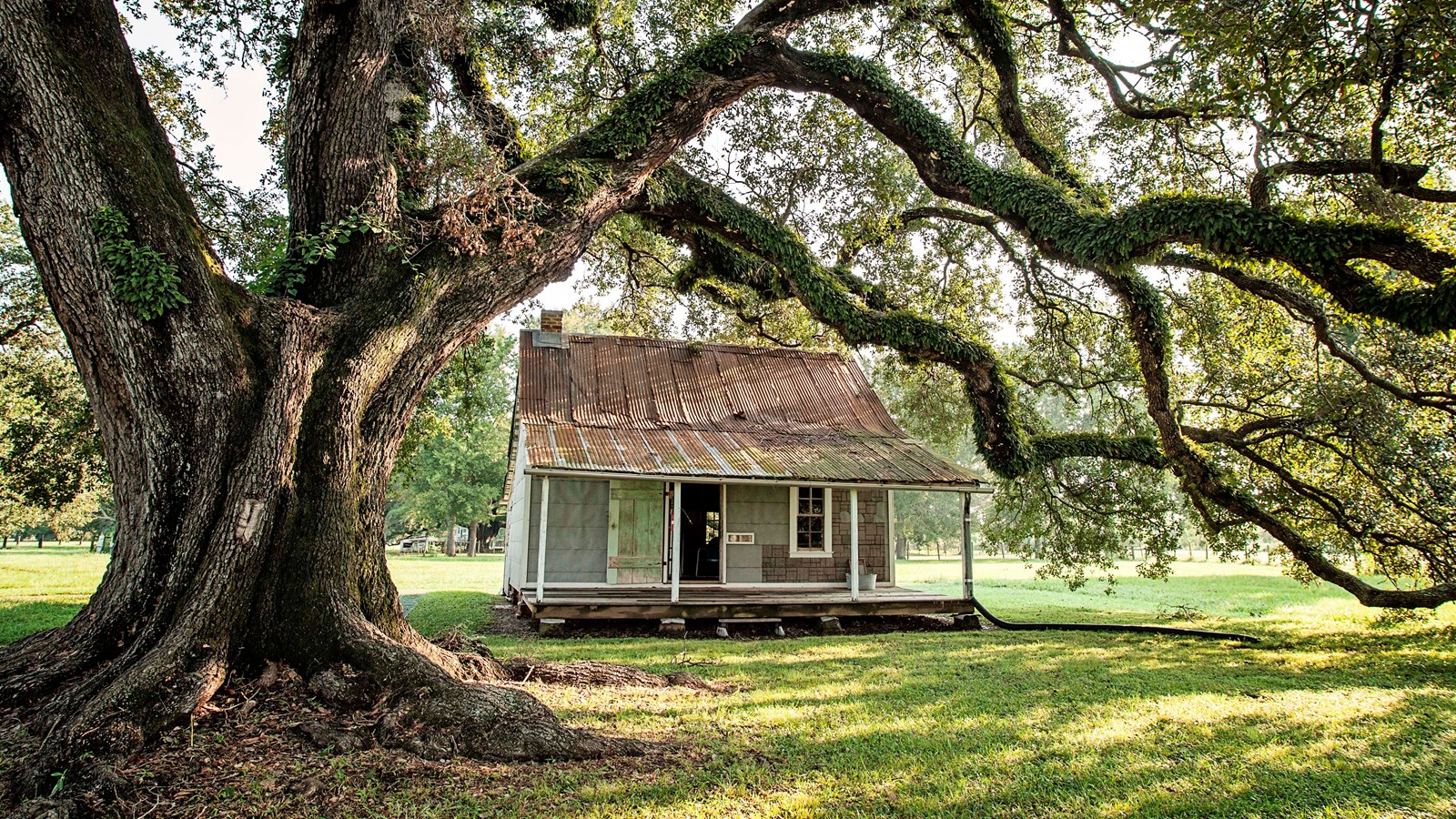Last updated: September 3, 2024
Place
Oakland Quarters

NPS Photo/Annabel Jones
Quick Facts
Location:
Natchez, LA
Amenities
2 listed
Benches/Seating, Historical/Interpretive Information/Exhibits
The North Slave/Tenant Cabin is one of two that remains at Oakland and is a remnant of a larger community, which extended for a quarter-mile to the south along the river. These buildings were home to generations of workers at Oakland Plantation--first enslaved families and later tenant farming families. Many of those later families and individuals were formerly enslaved or descendants of enslaved people, who continued to toil in the fields where their ancestors had labored.
Sharecropper and tenant farmer families lived in these quarters as late as the 1960s. The interior is historically furnished to the tenant farming era. Tenant farmers and sharecroppers did not own their own farms, and to work the land they had to turn over a share of the crop to the landowner. These people would shop for goods at the plantation store on a credit system. When the crop came in, they had to settle their debt with the landowner and the plantation store, and whatever was left over was their net profit. If it was a bad growing season, or if the boll weevil invaded the crop, the sharecroppers might be in debt at the end of the year. It was extremely difficult to get ahead under this labor system, so many farm workers from the south began migrating to large northern cities to find better jobs.
Sharecropper and tenant farmer families lived in these quarters as late as the 1960s. The interior is historically furnished to the tenant farming era. Tenant farmers and sharecroppers did not own their own farms, and to work the land they had to turn over a share of the crop to the landowner. These people would shop for goods at the plantation store on a credit system. When the crop came in, they had to settle their debt with the landowner and the plantation store, and whatever was left over was their net profit. If it was a bad growing season, or if the boll weevil invaded the crop, the sharecroppers might be in debt at the end of the year. It was extremely difficult to get ahead under this labor system, so many farm workers from the south began migrating to large northern cities to find better jobs.
